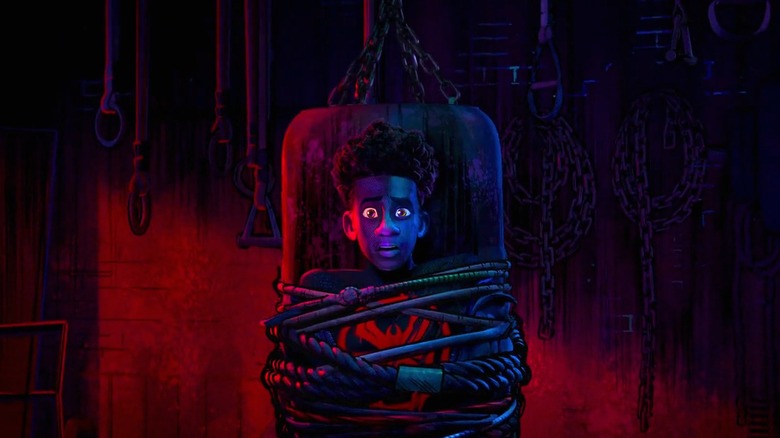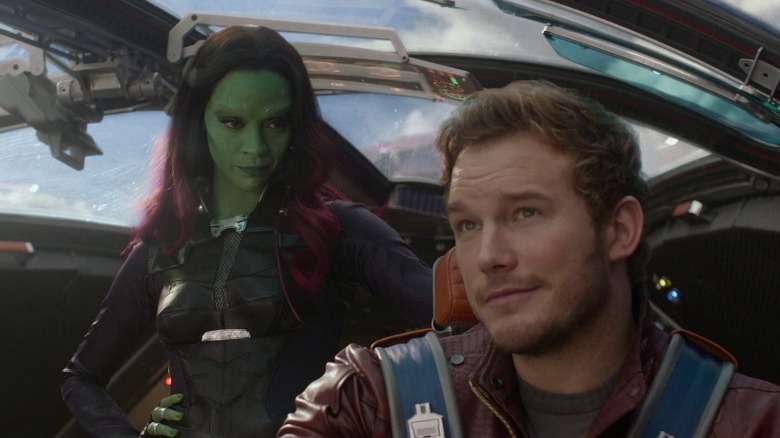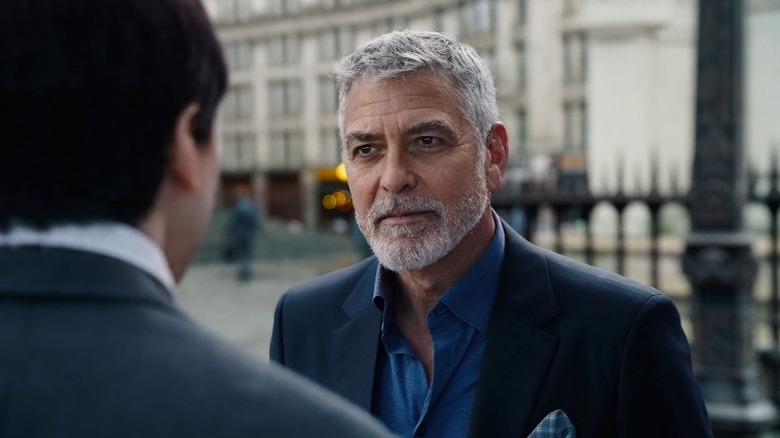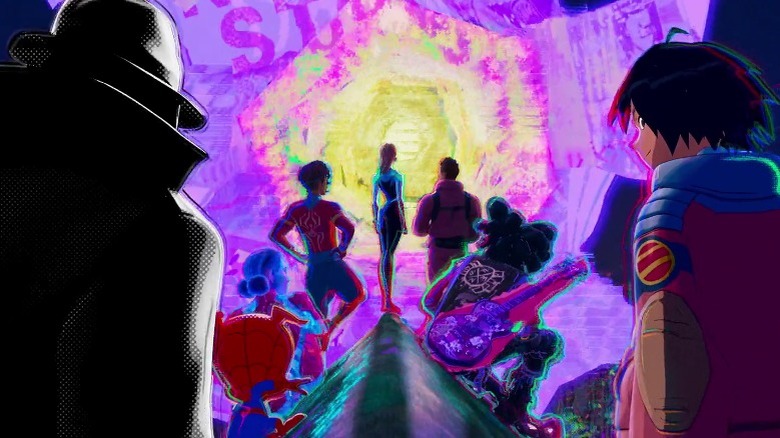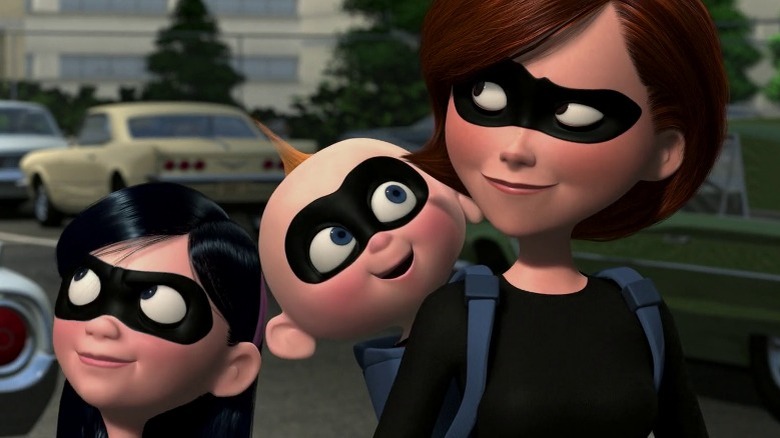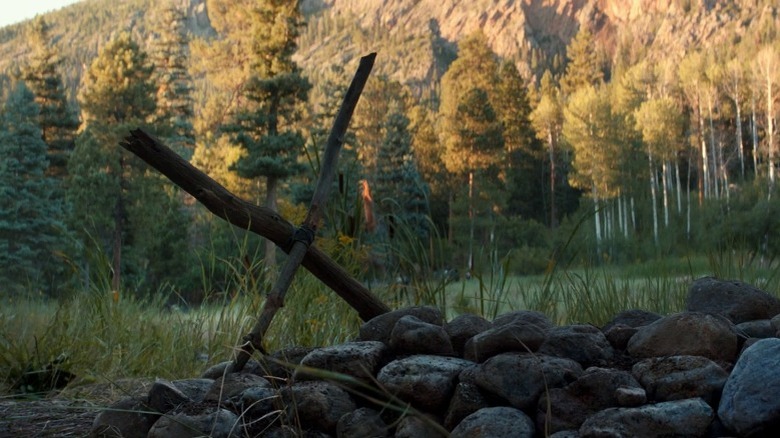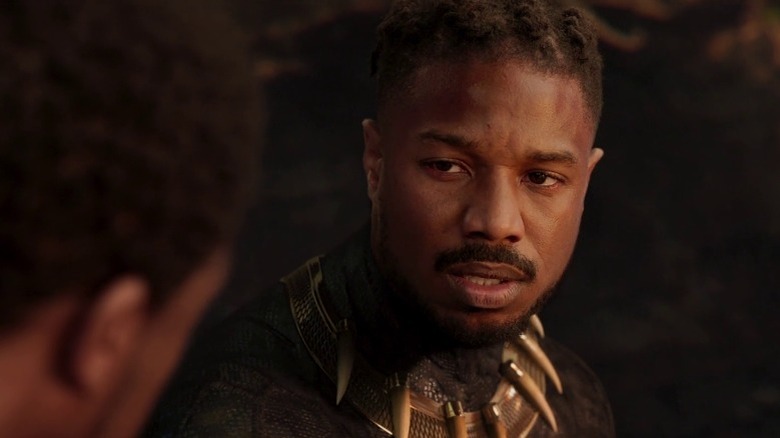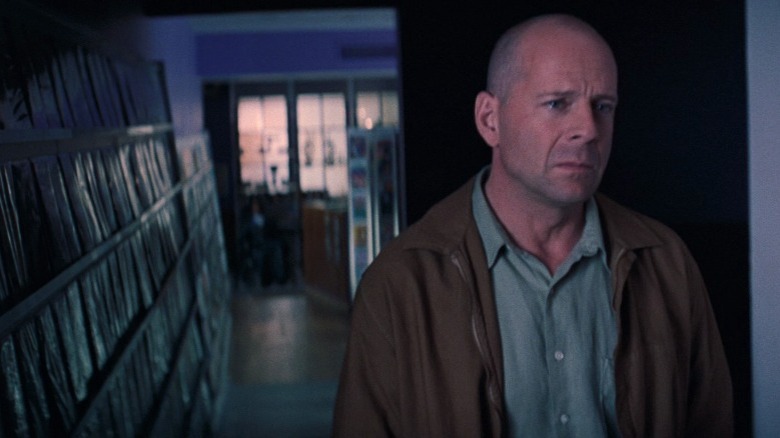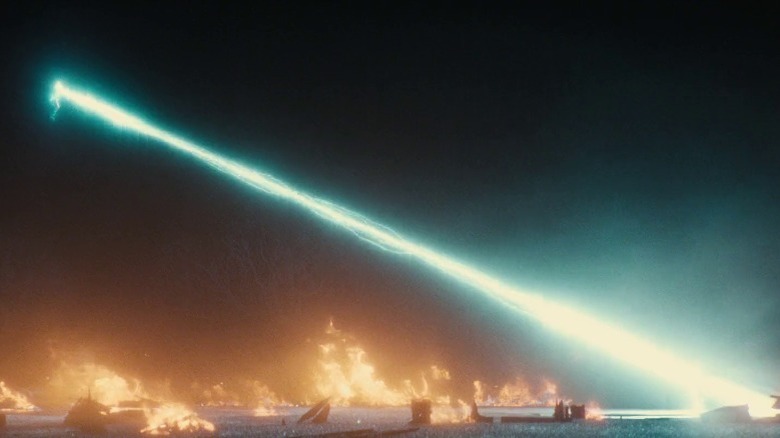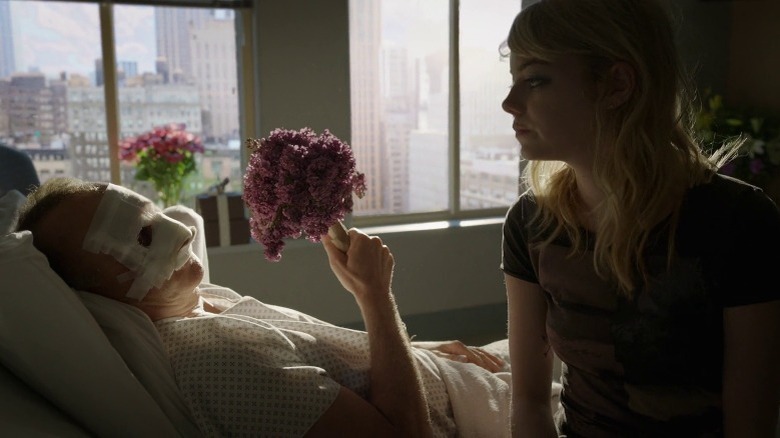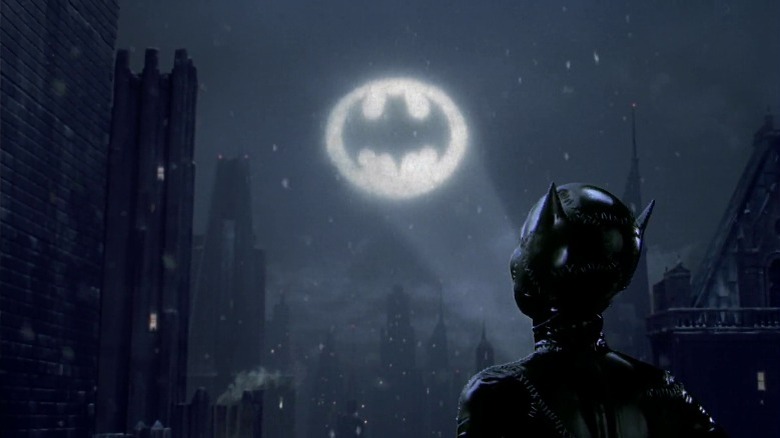Superhero Movies That Almost Had Very Different Endings
The history of film is teeming with alternate endings that never saw the light of day, whether it's because of production troubles, executive meddling, or writers and directors simply changing their minds. In franchise-oriented blockbuster cinema, the practice of studying, testing, and even shooting different endings is especially prevalent, as those movies have to weather a host of artistic and commercial ambitions that the ending must facilitate simultaneously.
Superhero movies, with their precise storytelling geometry and enormous cultural presence, are particularly susceptible to having their endings reconsidered or reshot. There is an enormous pressure for superhero movie endings to work, to resolve the plot efficiently, to send viewers home buzzing for the right reasons. While that sometimes leads to great, refreshingly thoughtful storytelling decisions, it can also lead to conformity, blandness, and incongruence just as often — especially when the ending has been changed out of sheer executive pressure.
This list compiles alternate superhero movie endings of both the good and bad kind. Some of these were actually shot and very nearly appeared in the finished films, while others never went beyond speculation in directors' or actors' minds. What they all share in common is having been considered or suggested at some point, and differing from the final ending in some significant form. To contribute to the rich catalog of alternate movie endings that would have changed everything, here are 10 superhero flicks that might have ended completely differently in another corner of the multiverse.
Guardians of the Galaxy's ending would have featured Nebula, the Collector, and Grandpa Quill
"Guardians of the Galaxy" ends on a cheerful and celebratory montage that would have frankly served as a fitting enough send-off for the characters had there never been a "Guardians of the Galaxy Vol. 2." But writer and director James Gunn has described an alternate ending to "Guardians of the Galaxy" that would have struck a very different tone from the "Ain't No Mountain High Enough"-set victory lap that we got.
Speaking at a press event /Film attended for the "Guardians" Blu-ray release in late 2014, Gunn stated that the montage was originally going to feature three more characters: In addition to the Guardians themselves, Yondu (Michael Rooker), Rhomann Dey (John C. Reilly), and Irani Rael (Glenn Close), we would have also gotten final looks at Nebula (Karen Gillan) and the Collector (Benicio Del Toro), and even hopped back to Earth for a check-in with a now-aged Grandpa Quill (Gregg Henry).
A scene with a rage-filled Nebula walking through a field in front of a torn-up Ravager vehicle got excised because, although Gunn loved it, it didn't fit the ending's joyful tone. The Collector's scene was removed from the same reason, but it was kept as a post-credits stinger. As for Grandpa Quill's scene — showing him looking up at the stars and lovingly remembering his daughter and grandson — was found to be both too melancholy and too confusing, as Henry suddenly appeared in old age makeup without warning.
Three different endings were shot for The Flash
"The Flash" was ultimately a movie of numerous misguided decisions, but no one can accuse Andy Muschietti and his team of taking those decisions lightly. Among the many difficult choices made during the film's production process was the fact that three different endings were shot, each reflecting a potential future direction for the DCEU.
The ending that was chosen for the final film, in which Barry Allen (Ezra Miller) is approached by George Clooney's Batman in the courthouse, confused many fans. But the two alternate endings would have been equally disorienting. In one, intended by then-studio heads Toby Emmerich and Walter Hamada as a clean break with the DCEU's Zack Snyder era, Barry would have encountered Supergirl (Sasha Calle) and Michael Keaton's Batman, decisively showing that the original timeline was not restored. In another, in addition to Supergirl and Keaton's Batman, he would also run into Superman (Henry Cavill) and Wonder Woman (Gal Gadot); this ending would have befitted the vision of Michael DeLuca and Pamela Abdy, Emmereich and Hamada's successors following the Warner-Discovery merger, who wanted to bring back Gadot and Cavill in future DCEU films.
That vision was also scrapped when DC Films was dissolved, giving rise to James Gunn and Peter Safran's new Warner Bros. division DC Studios. As part of the subsequent DCEU reboot, "Wonder Woman 3" and "Man of Steel 2" were canceled, and the ending of "The Flash" was used as a hard continuity reset.
The ending of Spider-Man: Across the Spider-Verse was changed at the last minute
It is well-known that the decision to split "Spider-Man: Across the Spider-Verse" into two movies was taken midway through production, with no release date on the horizon yet for its immediate follow-up "Spider-Man: Beyond the Spider-Verse." What not all fans of the trailblazing Sony animated film might know is that this massive change in the release strategy also entailed a change to the conclusion of the first half.
Originally, "Across the Spider-Verse" would have ended on a much more despondent note. Although the cutoff point was always going to be the cliffhanger in which Miles Morales (Shameik Moore) finds himself stranded on Earth-42 and captured by Aaron Davis (Mahershala Ali) and the Prowler, who turns out to be Miles' own Earth-42 self, there was at one point a version that didn't feature Gwen Stacy (Hailee Steinfeld) banding together with the ragtag team of alternate Spideys to rescue Miles. This version tested poorly, with co-director Justin K. Thompson describing it as "a bummer" in an interview with Empire.
Therefore, the ending was retooled by writers Phil Lord and Christopher Miller just six weeks before production wrapped. The addition of the closing team-up served two purposes: First, it brought the whole cast back together and set the stage for their mission in "Beyond the Spider-Verse," and second, even more importantly, it gave viewers a much-needed sense of hope for Miles' rescue.
Brad Bird was originally hesitant to end The Incredibles where he did
Part of the reason why "The Incredibles" worked so well as a 21st-century update to vintage superhero cinema was that it kept its focus entirely on the characters. Even as the stakes of the Parr family's fight against Syndrome (Jason Lee) and his goons became greater and greater and ultimately world-threatening, what mattered to writer-director Brad Bird was less the mission in itself than what it revealed and expressed about Bob (Craig T. Nelson), Helen (Holly Hunter), Violet (Sarah Vowell), Dash (Spencer Fox), and their loving but fraught family dynamic.
That being the case, it's no wonder that Bird was once reticent about ending the film on a new superhero call to action, as he revealed in a 2018 interview with CinemaBlend. Without getting into too much detail, Bird stated that he had another ending in mind instead of the one where the Incredibles suit up to face the Underminer (John Ratzenberger), but it was never fully thought-out. He knew that a back-in-the-saddle denouement would be the traditional way to go, but didn't want the superheroics to dilute the emotional and dramaturgical weight of the ending.
To split the difference, Bird ultimately created an ending in which the Underminer's emergence was not the real focus, nor really a proper cliffhanger — instead, the new mission would be just a way to show that the Parrs learned to stick together, embrace their powers, and take on the world as a family.
Hugh Jackman pitched a different Logan ending
The tragic, bittersweet final moments of James Mangold's "Logan" are about to have their stunning finality partly undercut by "Deadpool & Wolverine." Sure, it's teasing an alternate-universe Logan we might not know, but it will still offer a brand new glimpse at Hugh Jackman's Wolverine after what seemed like a pitch-perfect cinematic send-off. Then again, you can't really fault the people for wanting more Wolverine — nor can you fault Jackman himself for having once tried to keep the character alive at the end of "Logan."
Speaking to Yahoo! Movies in 2017, Jackman revealed that, although the film was always meant to conclude on a dramatic and poignant note, he suggested to Mangold that an "Unforgiven"-esque ending, with Logan surviving and continuing to be haunted by his demons, could be the way to go. "It's more powerful that ['Unforgiven' protagonist William] Munny doesn't die at the end," Jackman said. "You assume he's going to die, but by taking that final action and shooting everyone down, he embraces all the darkness he's tried to put outside him. Now he's got to live with it, and it's almost more devastating."
Mangold was adamant about ending the film on Logan's death, however, and Jackman eventually came around to his vision. "Unlike a human character [like William Munny], what's most poignant for someone who is thought to be indestructible is him dying while saying, 'This is what it feels like,'" Jackman said.
Killmonger's final interaction with T'Challa was more substantial in Black Panther
The ending of Ryan Coogler's "Black Panther" gives Erik Killmonger (Michael B. Jordan) one of the all-time great final lines for any movie villain: Refusing to be healed and imprisoned after T'Challa (Chadwick Boseman) stabs him in their vibranium mine fight, he looks out onto the sunset and says, "Bury me in the ocean, with my ancestors that jumped from the ships 'cause they knew death was better than bondage."
As disclosed by editor Michael Shawver to CinemaBlend in 2019, that was not always the way that scene went. "What we shot originally, and in the script, was Killmonger saying 'It's beautiful, but what are you going to do for everybody in the world who can't see this?'" Shawver said. Although the scene worked, thanks to the powerful dialogue and Jordan's customarily brilliant performance, it didn't feel right for T'Challa to get the final lesson of the film from the villain's mouth — nor did the final convo really fit Killmonger as a character.
To course-correct, a new version of that scene was created in reshoots, with Killmonger uttering the famous last words everyone now knows and loves. The scene with T'Challa, Nakia, and Shuri opening an outreach center in Killmonger's hometown of Oakland, CA was also added in at that later stage of production, the better to drive home the overarching moral of "Black Panther" in a more organic and satisfying way.
Unbreakable once had a more open, yet less melancholy ending
The ending is always a major talking point in any M. Night Shyamalan flick, and "Unbreakable" was no different. Following what seems like a reasonably cut-and-dry superhero origin story, David Dunn (Bruce Willis) discovers that his mentor Elijah Price (Samuel L. Jackson) has been the author of myriad so-called "accidents," including the train crash that revealed David's powers, all in search of a superheroic match to his psychotic villainy. A distraught David tearfully walks away from Elijah and reports him to the police, landing Elijah in an institution for the criminally insane.
That ending succeeded in tying up narrative loose ends and setting up an entire trilogy, culminating in a final film that can be reasonably described as either a disastrous sequel or a bold, brilliant climax. But the original ending to "Unbreakable" would have left more questions than answers.
In an earlier draft of the screenplay, "Unbreakable" ended with David simply disappearing into a crowd of ordinary citizens, without the explanatory freeze-frame titles; per Shyamalan, the focus was shifted to emphasize the twist ending — specifically, the sense of betrayal and shock that came over David upon realizing he was being used by his assumed friend. It would have been a less thoroughly comprehensible ending, but also a much less melancholy one — the decision to leave off David on a moment of anguish and heartbreak is part of what makes "Unbreakable" so unique and unusually hefty as a superhero film.
The bombastic ending of Wonder Woman was a studio imposition
It took decades for a Wonder Woman movie to finally get off the ground, but once it did, Patty Jenkins proved the character's blockbuster-leading viability with flying colors. The huge box office success and widely positive critical reception to 2017's "Wonder Woman," which critics called the best DCEU superhero movie yet, showed that Jenkins knew exactly what she was doing. But not all of the film's choices were roundly acclaimed, and at least one element — the climax — drew significant criticism from reviewers. Many found that the bombastic battle between Diana Prince (Gal Gadot) and Ares (David Thewlis) felt out of step with the preceding film, drowning its players in impersonal CGI mush instead of delivering a proper emotional crescendo to Diana's origin story.
As it happens, Jenkins herself might not be entirely removed from that opinion. The director has said in several interviews that "Wonder Woman" was originally slated to feature a smaller, more personal ending, until Warner Bros. intervened and demanded the CGI fest that we got in the end – when Jenkins and company were already close to done with the shooting schedule. We don't know what the original smaller ending would have looked like, but we do know that the experience inspired Jenkins to aim for a more scaled-down and character-centric ending in "Wonder Woman 1984" — not that that stopped audiences and critics from giving the film a much less enthusiastic reception than had been given to its predecessor.
Birdman almost had a very meta ending with a celebrity cameo
For a movie that could be not-inaccurately described as a big joke at the expense of Hollywood, Alejandro González Iñárritu's "Birdman or (The Unexpected Virtue of Ignorance)" sure got heartily embraced by the same industry it was mocking. The film's frenzied satire of the American movie business struck a chord with Academy voters, earning it the only Best Picture Academy Award ever to be bestowed, technically, on a superhero movie. Had the film's original ending been maintained, the meta-cinematic sense of humor that nearly won Michael Keaton a Best Actor award for his portrayal of a former superhero actor trying to be taken seriously (sound familiar?) could have been pushed even further.
In the film's originally-scripted ending (via Vanity Fair), Riggan Thomson's (Keaton) real-shooting stunt would have netted him prestige and a TV interview with either James Lipton or Charlie Rose, and the camera would then travel backstage towards a dressing room, where Johnny Depp would be repeating the exact same prep routine as Riggan at the beginning of the film — complete with Jack Sparrow's voice feeding his ego like Birdman's voice fed Riggan's.
Midway through the shoot, Iñárritu realized he hated that ending, and it was changed to the hospital room coda we got. Which was just as well, because, as revealed by co-writer Alexander Dinelaris Jr., they couldn't possibly have nabbed Johnny Depp or even secured the rights to use a "Pirates of the Caribbean" poster.
Batman Returns would have left Catwoman's survival ambiguous
At the end of "Batman Returns," Selina Kyle, aka Catwoman (Michelle Pfeiffer), finally manages to get her revenge on Max Shreck (Christopher Walken) by killing him with an electrical explosion, which also seems to claim her own life. Bruce Wayne (Michael Keaton) is unable to find Selina's body, however, and spends the remainder of the movie wondering whether or not she might have cheated death once again.
Bruce's uncertainty comes to a head in a scene where he appears to see Selina's shadow running in an alley. He asks Alfred (Michael Gough) to stop their car, and rushes down the alley to investigate, only to find Selina's cat Miss Kitty. He takes the cat back to the car with him and wishes Alfred a merry Christmas, still mulling over the ambiguity of Selina's fate.
"Batman Returns" would have originally ended on that scene, with a classic camera boom up to the bat-signal in the sky. But according to special features on the movie's DVD release, Warner Bros. asked for one last narratively meaningful shot to be added on to the end – and, incidentally, it became the film's most iconic image. That would, of course, be the shot of Selina Kyle perking up to look at the bat-signal, thus confirming that she has survived. Filmed with a body double standing in for Pfeiffer, the shot was motivated both by the desire to make the film more kid-friendly and by the strength of Pfeiffer's performance, which nearly prompted its own spin-off.
